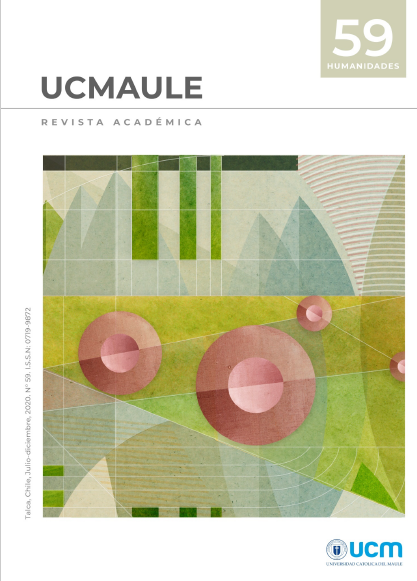Artigue, M., & Blomhøj, M. (2013). Conceptualising inquiry-based education in mathematics. ZDM - The International Journal on Mathematics Education, 45(6), 797-810.
Borromeo-Ferri, R. (2006). Theoretical and empirical differentiations of phases in the modelling process. ZDM – The International Journal on Mathematics Education, 38(2), 86–95. DOI: https://doi.org/10.1007/BF02655883
Blomhøj, M. (2004). Mathematical modelling a theory for practice. In B. Clarke, D. M. Clarke, G. Emanuelsson, B. Johansson, D. V. Lester, A. Wallby, & K. Wallby (Eds.), International Perspec- tives on learning and teaching mathematics (pp. 145-159). Göteborg University: National Center for Mathematics Education.
Blomhøj, M., & Kjeldsen, T.H. (2006). Teaching mathematical modeling through project work. ZDM, 38, 163– 177. DOI: http://doi:10.1007/BF02655887
Blomhøj, M., & Jensen, T.H. (2007). What's all the Fuss about Competencies? En: Blum W., Galbraith P.L., Henn HW., Niss M. (eds) Modelling and Applications in Mathematics Education. New ICMI Study Series, vol 10. Springer, Boston, MA. DOI: https://doi.org/10.1007/978-0-387-29822-1_3
Blum, W. (1996). Anwendungsbezuge im Mathematikunterrichtin der didaktischen Diskussion. Mathematische Semesterberichte, 32, 195-23.
Blum, W., & Leiß, D. (2007). How Do Students and Teachers Deal with Mathematical Modelling Problems? The Example Sugaloaf und the DISUM Project. En C. Haines, P. L. Galbraith, W. Blum, & S. Khan (Eds.), Mathematical Modelling (ICTMA12)-Education, Engineering and Economics (pp.222-231). Horwood.
Blum, W., & Borromeo-Ferri, R. (2009). Mathematical Modelling: Can It Be Taught And Learnt? Journal of Mathematical Modelling and Application, 1(1), 45-58.
Coulange, L. (1998). Les problèmes “concrets” à “mettre en equation” dans l'enseignement. Petit x. 47, 3-58.
Gómez-Chacón, I., Kuzniak, A., & Vivier, L. (2016). El rol del profesor desde la perspectiva de los espacios de trabajo matemático. Boletín de Educación Matemática, Bolema, 30(54), 1-22. DOI: https://doi.org/10.1590/1980-4415v30n54a01
Derouet, CH. (2016). La fonction de densité au carrefour entre probabilités et analyse en terminale S. Tesis Doctoral. Universidad de Paris Diderot (Paris 7), Francia. Recuperado de http://theses.md.univ- paris-diderot.fr/DEROUET_charlotte_2_va_20161125.pdf
Doerr, H., Ärlebäck, J., y Misfeldt, M. (2017). Representations of modelling in mathematics education. In G. Stillman, W. Blum & G. Kaiser (Eds.), Mathematical modelling and applications: Crossing and researching boundaries in mathematics education (pp. 71 82). Springer.
Henry, M. (1997). Notion de modele et modélization en l'enseignement. En: Enseigner les probabilités au lycée. Reims: Commission Inter-IREM. pp. 77-84.
Henry, M. (2001). Autour de la modélisation en probabilités. Presses Universitaires de Franche-Comté.
Kaiser, G. (1996). Realitatsbezuge im Mathematikunterricht- Ein Uberblick uber die aktuelle und historische diskussion. EN Graumann, G. et al. (eds): Materialien fur einen realitatsbezogenen Mathematikunterricht, (pp. 66–84), Franzbecker. Bad Salzdetfurth.
Kaiser, G., Blum, W., Borromeo-Ferri, R., & Stillman, G. (2011). Preface. In G. Kaiser, W. Blum, R. BorromeoFerri, & G. Stillman (Eds.), Trends in teaching and learning of mathematical modelling: ICTMA14 (pp. 1-5). Springer.
Kuzniak, A. (2011). L'Espace de Travail Mathématique et ses genèses. Annales de Didactique et de Sciences Cognitives, 16, 9-24.
Kuzniak, A., & Richard, P. (2014). Spaces for mathematical work: Viewpoints and perspectives. Relime, 17(4.1), 17-26. DOI: https://dx.doi.org/10.12802/relime.13.1741a
Kuzniak, A., Nechache, A. & Drouhard, J. P. (2016). Understanding the development of mathematical work in the context of the classroom. ZDM, 48(6), 861–874. DOI: http://doi.org/10.1007/s11858-016-0773-0
Nechache, A. (2018). Le rôle des dimensions de l'ETM dans l'élaboration du travail mathématique dans de cadre de la résolution des tâches probabilistes. Menon. Journal of Educational Research, 4, 40-53.
Nechache, A. (2016). L'articulation des genèses de l'Espace de Travail Mathématique dans la ré- solution de tâches probabilistes faisant appel à la modélisation. En I. Gómez-Chacón, A. Kuzniak, K. Nikolantonakis, R. Richard y L. Vivier (Eds.), Acta del Quinto Simposio Internacional ETM (pp.157-166). University of Western Macedonia.
Montoya, E., & Vivier, L. (2016). Mathematical Working Spaces as an analyzing tool for the teaching and learning of calculus. ZDM - International Journal on Mathematics Education, (5), 1689-1699. DOI: https://doi.org/10.1007/s11858-016-0777-9
Parzysz, B. (2011). Quelques questions didactiques de la statistique et des probabilités. Annales de Didactique et de Sciences Cognitives,16, 127-147
Radford, G. (2008). The ethics of being and knowing: Towards a cultural theory of learning. In Radford, L., Schubring, G. & Seeger, F. (Eds.). Semiotics in mathematics education epistemology, history, classroom, and culture (pp. 215-234). Sense Publishers.
Rauscher, J. L. & Adjiage, R. (2014). Espaces de travail de résolution d'un problème de modèlisation. Relime, 17(4), 41-64. DOI: http://dx.doi.org/10.12802/relime.13.1742
Verdugo-Hernández, P. (2020). Aproximación a la enseñanza de las sucesiones de números reales por medio de los Espacios de Trabajo Matemático. Revista Chilena de Educación Matemática, 12(2), 71-80. DOI: https://doi.org/10.46219/rechiem.v12i2.28


